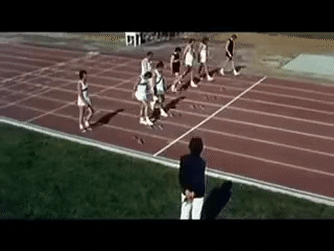Shared delusion
Ok, bear with me. Make what judgements you will – it won’t affect what I’m about to say – but I get quite a lot of my news from the Flipboard app on my iPad. Under the heading of “Physics” I encountered an article with the following title: WHY IS SCIENCE GROWING COMFORTABLE WITH PANPSYCHISM (“EVERYTHING IS CONSCIOUS”)? So, I have some thoughts and opinions on this idea. Assume it’s true, and that the universe is awash with consciousness. And I’m willing to take the notion a large step further. Let’s further assume that this ubiquitous consciousness can interact with matter; that it can be a causative agent in a desultory and not necessarily benevolent manner. This would go a long way to explaining a number of bizarre occurrences that have featured in my life, and the life of SWMBO, and our lives as a couple.
For example, we have observed over the years that if we really like something – often a foodstuff – our display of enthusiasm would sometimes be followed by that something disappearing from the shop shelves forever. This happened with those excellent arancini; and that super superior chocolate ice cream; and enough other things to make it statistically noticeable.
And then – although this happens less often nowadays – the statistically noticeable frequency with which streetlights would blink off when one, the other, or both of us would pass by.
And how about all those near death occurrences that have so marked my travels, as recorded here? What could all that mean, or portend? Or could it be the universe is simply louche.
Louche: “disreputable or sordid in a rakish or appealing way”. That sums up the conscious, causative universe that I have experienced. But there’s more. (Oh, goodie. I was just getting interested.)
More outré-ness
So, there I was, a youngish physics graduate student (how that came about … well, that story is in the cloud if you’re interested), and I encountered, and became enamored with, the quaternion algebra, H. It helped me get through my advanced exam when I was asked an EM question and told the assembled professors that in order to answer their question I’d have to write Maxwell’s equations in a way they’d never seen before. Eyebrows were raised, and I was told to pray proceed. This I did, and true to my word, they’d never seen anything like my way, because they didn’t look upon H as useful.
But not too long after that a collaborator of Feza Gürsey (Yale) came up and gave a talk at Harvard. I trekked into Cambridge and learned from this talk of yet another division algebra: the octonions, O. The louche universe had thrown these things in my way, like some sort of intellectual opium, and kept me addicted from that time to this – and, I predict, all future times in which I participate.
This led to the my constructing the spinor kernel, T = C⊗H⊗O, which I used to explain where the standard model comes from, and why the universe is made of matter, and where is all the concomitant antimatter. So, yay, cool, and oh, the universe failed to mention that none of that mattered, because it wasn’t relevant to the meaty work of “real” physicists: using QFT to get numbers that could be compared to experiment, leading to clumsy attempts at high-fives at numerous conferences, on the assumption that the QFT numbers matched the experiment numbers.
Soporific QFT
QFT, as commonly used in physics, is basically mathematical alchemy. As exploited in QED and QCD it has proven to be a stellar addition to any ostensibly legitimate theorist’s toolkit. But these successes warped physics for decades, as new hypothetical fields were thrown willy nilly into the mix and new predictions made (sometimes). This could happen because the architecture underlying theoretical physics was insufficiently rigid. After all, you might distill urine and end up discovering phosphorus. It could happen.
The last serious bit of real theoretical architecture was Dirac’s spinors and algebras. All that can be built from P = C⊗H, and from this starting point you also get U(1)xSU(2) as an internal symmetry. Cool. Then – being inspired by Gürsey’s work – you wonder what happens if you expand the architectural underpinnings to T = C⊗H⊗O. Et voila, U(1)xSU(2)xSU(3), and all that other stuff.
But where’s the QFT? Well, it’s not there – yet. Oh? Well, come back when it is.
More Louche-ness
I understand that attitude. That’s not to say I approve. There is a hell of a lot of human behavior I understand but disapprove of, occasionally quite strenuously. But the universe had a new twist up its sleeve: it allowed the LHC to dash the hopes of the majority of alchemists, and many of them are drifting away from the merry TOE playground. Witten, for example (or so it is rumored – I don’t pay strict attention to these goings on, so, you know, grain of salt and all that), has moseyed over to black holes and qubits.
One commenter on a recent Peter W blog post wrote: “For many of us, it was pretty clear a long time ago that pursuing the search of a final TOE was a complete waste of time, for the simple reason that… it does not exist.”
So, the universe, in a perversely indolent manner, having led me down this … well (and yes, it’s all about me):
I shall be telling this with a sigh
Somewhere in ages and ages hence:
Two roads diverged in a wood, and I –
I took the one less traveled by,
and that has made all the difference.
You see, the mainstream is not just taking their ball and going home; they are taking the very concept of the game that required the ball. You can keep the ball, but there is no game that anymore requires it. Make a new game, but good luck finding players willing to learn a whole new set of rules. The old players are being shifted to more amenable fields … like croquet and crochet. And where does that leave me? Sitting on an ice rink with a tennis racket and a rugby ball. Alone. Sniff.
But the universe wasn’t done toying with me. To ensure the world would turn its attention elsewhere, it cancelled all conferences and made everyone stay at home and … well, I have little idea what others are doing, but it’s no longer partaking in self congratulatory confabs in places like Corsica or the Canadian Rockies.
On the other hand, it may be that the universe is not conscious, and all this is just stuff that happened. And that it is not aimed explicitly at me … as difficult as that is to believe.











